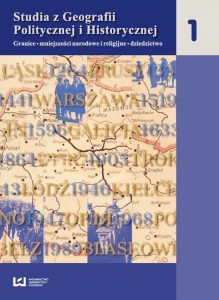Stosunki międzypaństwowe Polski z Ukrainą, Białorusią i Litwą po 1990 roku w kontekście sytuacji mniejszości narodowych
Polish interstate relations with Ukraine, Belarus and Lithuania after 1990 in the context of national minorities
Author(s): Marek BarwińskiSubject(s): Essay|Book Review |Scientific Life
Published by: Wydawnictwo Uniwersytetu Łódzkiego
Keywords: mniejszości narodowe; Polska; Ukraina; Białoruś; Litwa; national minorities; Poland; Ukraine; Belarus, Lithuania
Summary/Abstract: Głównym celem artykułu jest przedstawienie roli mniejszości narodowych w relacjach międzypaństwowych. Szczególnego wymiaru nabiera ona w przypadku sąsiadujących ze sobą państw, których skomplikowana historia doprowadziła do powstania skupisk poszczególnych narodowości w regionach przygranicznych. Zachodząca od początku lat 90. XX w. na obszarze środkowej Europy transformacja ustrojowa, przeobraziła relacje polityczne i ekonomiczne pomiędzy poszczególnymi państwami tego regionu, które dodatkowo komplikuje zróżnicowany stopień zaawansowania procesów integracji wschodnich sąsiadów Polski. Zmianie uległa także sytuacja, zwłaszcza polityczno-prawna, mniejszości narodowych, które – odmiennie niż w okresie komunistycznym – stały się istotnym elementem, niejednokrotnie konfliktogennym, wzajemnych relacji międzypaństwowych. In the early 1990s, significant changes in the political and geopolitical situation in Central and Eastern Europe occurred: the collapse of communist rule, the unification of Germany, the collapse of the Soviet Union and the dissolution of Czechoslovakia. The creation, over a short time, of a number of independent nation-states in the immediate vicinity of Poland had a vast influence on individual national minorities, especially those living near the borders. There were huge changes to the political and economic relations between democratic Poland and its newly independent neighbours and, to a large extent, between individual nations, now divided by borders. The process of expanding the area of European integration began, which led, after a dozen or so years, to the inclusion of some Central and Eastern European countries in the NATO and EU structures, while leaving some of those countries outside the zone of political, economic and military integration, thus creating new division lines in the new political and legal reality. One consequence of the contemporary processes of political, economic and military integration of the European continent is the strengthening of its division into the Western Europe (in its widest meaning) and the Eastern Europe (not included in the integration process). At the Polish border with Belarus and Ukraine, the line of the modern division, strengthened in the literal (technical measures to protect the borders) and legal sense (visa regulations) overlaps with the civilisation, cultural and religious division line that has been shaped over the ages. Despite the claims from the government in Warsaw of “Polish eastern policy”, we can see a clear turn towards “western policy”. In political, military and economic sense, Poland is clearly facing west, which results in turning away from its eastern neighbours, which is particularly disadvantageous for political and geopolitiacl reasons.
Journal: Studia z Geografii Politycznej i Historycznej
- Issue Year: 2012
- Issue No: 01
- Page Range: 139-166
- Page Count: 28
- Language: Polish

